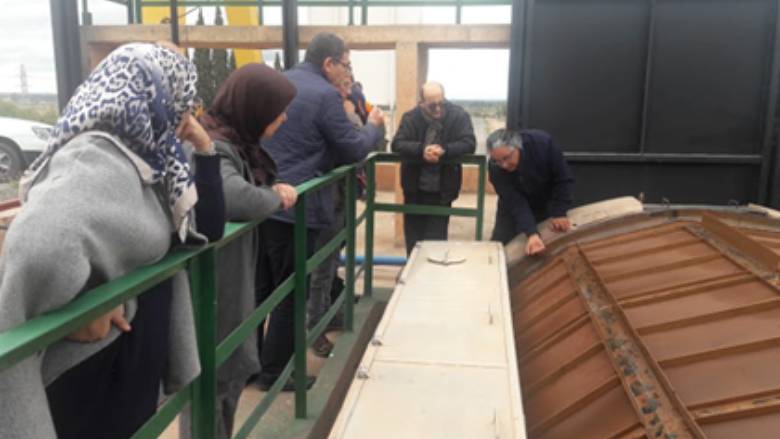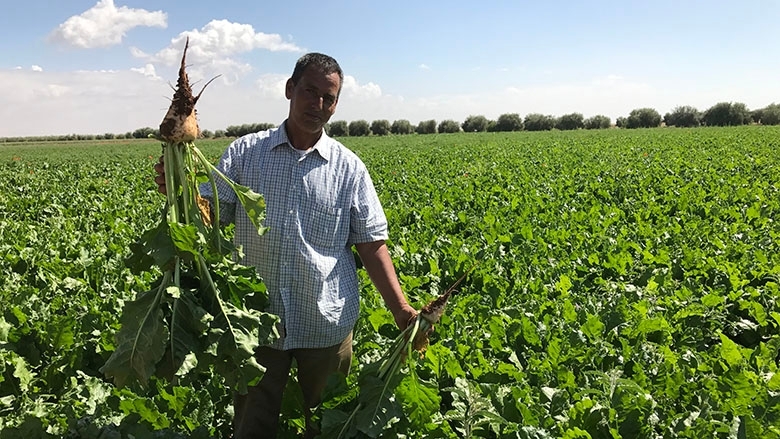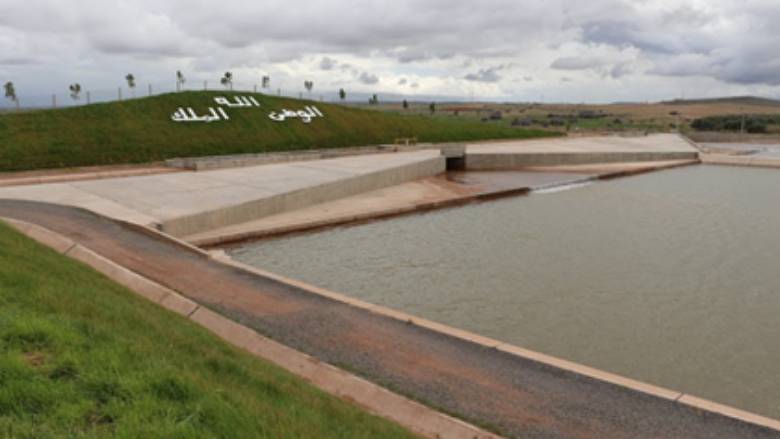Challenge
Morocco is ranked among the top 25 most water-stressed countries in the world. Over the past two decades, the Moroccan government focused and invested on ways to make the best use of the limited water resources. At time of appraisal, the agriculture industry was the primary user of surface water, accounting for 85 percent of withdrawals. The Oum Er Rbia river supplied water to three large-scale irrigation schemes—Tadla, Haouz and Doukkala. These schemes total 322,700 ha, and they represented half of Morocco’s large-scale irrigation area. The Oum Er Rbia basin faced acute water scarcity problems. For more than 20 years, the three ORMVAs (Regional Agricultural Development Office / Office Régional de Mise en Valeur Agricole) received only 60 percent of the surface irrigation water.
Approach
Over the past 30 years, the World Bank has provided support to the agricultural sector in Morocco. The Bank designed a project that complemented Morocco’s strategic priorities stated in their National Irrigation Water Saving Program (PNEEI) and Green Morocco Plan (PMV), which increased agricultural productivity. The project helped participating farmers with irrigation services necessary for high efficiency drip irrigation. The project also helped improve targeted farmers’ access to technology, financing and agricultural markets. In addition, the project invested in capacity building of the government and project implementing agencies, including strengthening the regulatory framework to promote productive irrigation use, water conservation policies and implemented efficient water services by ORMVA’S, through better cost-recovery and improved maintenance.

Results
From 2010 to 2017 the project delivered the following results:
6,811 farmers, of whom 622 were women, benefited from improved irrigation services over an area of 22,062 ha.
A total of 2,305 farmers adopted more efficient irrigation technologies. 230 of the farmers were women, comprising over 43 percent of the project area.
- In Tadla, in the early years, there was a 43 percent reduction of the volume of groundwater abstracted by irrigators as farmers received better water quality and better services from the piped system.
- In Tadla, farms that were less than 5 ha experienced a 166 percent increase in agricultural production while farms that were between 5-10 ha saw a 77 percent increase in agricultural production.
- In Doukkala, farms that were less than 5 ha experienced a 142 percent increase in agricultural production, farms that were between 5-10 ha saw a 67 percent increase in agricultural production. Farms greater than 10ha saw a 312 percent increase in agricultural production.
While preliminary results showed a significant reduction in the volume of groundwater abstracted, there are indications that overall water consumption increased in subsequent years due to intensification and diversification. Policy dialogue is ongoing to ensure gains in water productivity are translated into real water savings through quotas and other water conservation policies.

